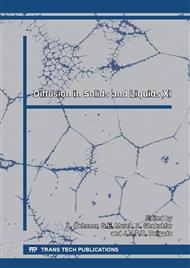p.83
p.89
p.95
p.99
p.104
p.110
p.116
p.119
p.125
Energetic and Exergetic Analysis of the Clay Bricks Drying in an Industrial Tunnel Dryer
Abstract:
The purpose of this paper is to present a theoretical study of industrial hollow bricks drying in across flow tunnel dryer. The theoretical model is based on the 1st and 2nd laws of Thermodynamic applied to the system. To validate the methodology, numerical and experimental data of the moisture content of the brick during the drying in an industrial scale are compared and a good agreement was obtained. Results of moisture content and temperature of the product and air, and energy and exergy efficiencies are presented and analysed.
Info:
Periodical:
Pages:
104-109
Citation:
Online since:
July 2016
Authors:
Keywords:
Price:
Сopyright:
© 2016 Trans Tech Publications Ltd. All Rights Reserved
Share:
Citation:


